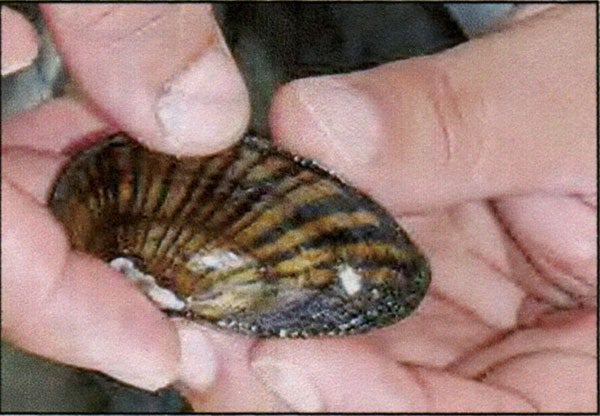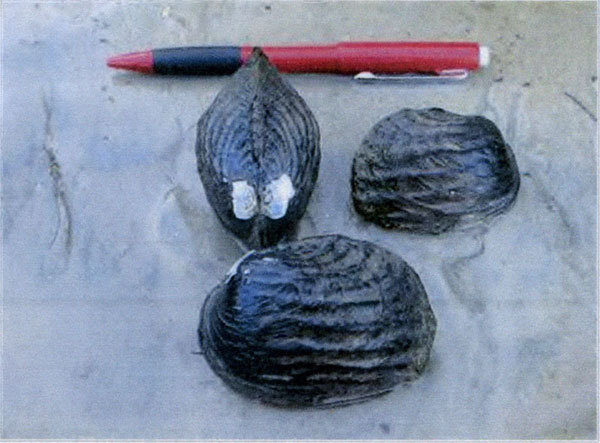Mussels of Spring Creek
Published 5:38 pm Thursday, May 26, 2011
In the last couple of years, I have heard a lot about our local mussels.
When I read that two of the most exotic species were found in Spring Creek, and they had such catchy names, I had to research them. I know that mussels are low on the food chain. However, after doing my homework, I found out some very interesting facts about these exotic, but little-known creatures.
Some scientists rank mussels as the nation’s most threatened natural resource. Of the 300 species found in the United States, most live in our area of the southeast. They are native in the water systems of Georgia, Florida and Alabama.
First discovered in the Chattahoochee River near Columbus, Ga., mussels were also discovered in abundance in the Flint River. The Chipola River and the Ochlockonee River also have some colonies as does the Apalachicola River.
Recently, scientists have found live groupings at 23 of 33 sample sites. One large site was in the Chattahoochee River and 13 sites were found on the Flint River. Spring Creek can now be added as it too is a habitat site.
Mussels move very slowly through the sand and gravel and the silt of the rivers by means of a muscular foot. They have a close fitting shell that protects them from predators and to keep them from drying out when high up on the river banks.
Mussels obtain water and food by siphoning the water through its gills. This provides them with phytoplankton, tiny zooplankton and other organic matter.
Reproduction in mussels is sort of a hit or miss activity. The males release sperm into the water when the current is strong enough to carry it to a female. Then it travels inside her shell and fertilizes her eggs. If the current is not strong enough or if the female has no eggs, nothing will happen. However, the eggs that do become fertilized develop into larva and grow inside the gills of the female until she releases them into the water.
In this larva form they need to attach themselves to fish for a short time and live as parasites. Sounds simple but it is complicated because they cannot attach to just any fish. It has to be a largemouth bass or a spotted bass.
When full grown, the mussels leave the fish and attach themselves to the river floors where they feed on all of the organic matter they filter out from the water.
If there are many species of mussels and many groups of those that are reproducing it is an indication of how healthy the water system is. All of this means good fishing and good water quality for waterfowl and other wildlife. This in turn means good water for humans too.
The opposite is true when the mussels are at risk. This indicates problems for other fish and wildlife species as well as for people.
Mussels are natural filters. What they feed on helps to purify the aquatic system. Mussels are also an important food source for many species of wildlife including otters, raccoon, herons, egrets and some fish.
Mussels can’t tolerate changes in water quality that come from pollution or sediment from dredging and soil erosion. Sort of like the birds that used to be kept in mines, when they died, the miners knew that the air was not healthy for humans. So it is with mussels. When they die, pollution is present.
Snuggled in their shells, they are not much to look at. To those of us who haven’t seen them, they resemble a blob, but scientists know all of their parts: A mouth, a couple of muscles, a single sturdy foot for digging and anchoring and gills for straining food from the water.
Mussels played an important role in the history of prehistoric peoples of the Apalachicola River Basin. They were used as food and the shells were used for ornamentation, tools and as a commodity for trade. Piles of shells left behind by native Americans have extended for miles along the sites of old villages and encampments, especially along the Apalachicola River.
American Indians used the shells from mussels to make tools and jewelry. Their shells were a major source for making buttons until about 1950, when plastic buttons came along.
Freshwater mussels have been, and continue to be, a major economic resource, in the cultured pearl industry, especially in Asia.
Since mussels don’t have a face and aren’t cute and cuddly, it is hard to gain sympathy for them. However, what mussels lack in beauty they make up for in their colorful names.
Take for instance the Oval Pigtoe. His scientific name is Pleurobema pyriforme. He is an endangered specie of freshwater mussel that is now protected by the federal government. Because of the increase in development and construction along our rivers, the population of the Oval Pigtoe has declined dramatically.
The Shinyrayed Pocketbook is another local mussel. He too, is found in the rivers of Georgia, Florida and Alabama. The average length of this mussel is three inches. It is quite attractive with its smooth and shiny shell surface. Its shape is elliptical with a rounded top. The shell’s surface is light yellowish brown. It is decorated with bright emerald green and black rays that go from the top to the bottom. Inside the shell is white.
The main cause of decline for the Shinyrayed Pocketbook is the destruction of its habitat due to the over cutting of trees.
When a specie is protected by the federal government they are so rare that they are in danger of becoming extinct. Unfortunately, extinction is forever and once gone, a species can never return to life. Some threatened species are more abundant at this time but may become endangered in the future.
So when you are thinking of mussels and wondering what good are they, remember that they filter out a lot of poisons that are in our water. Without them we could be living in pollution.



